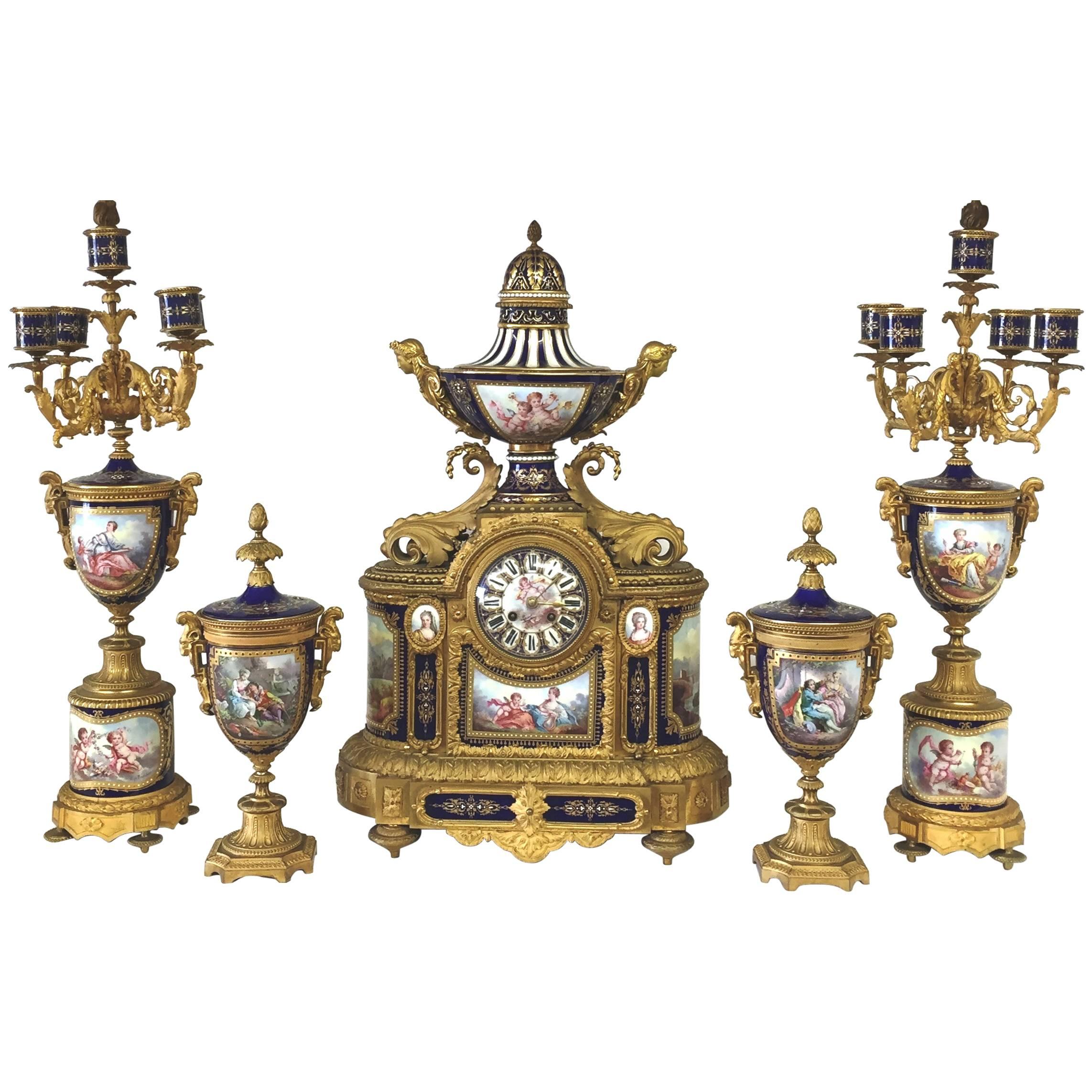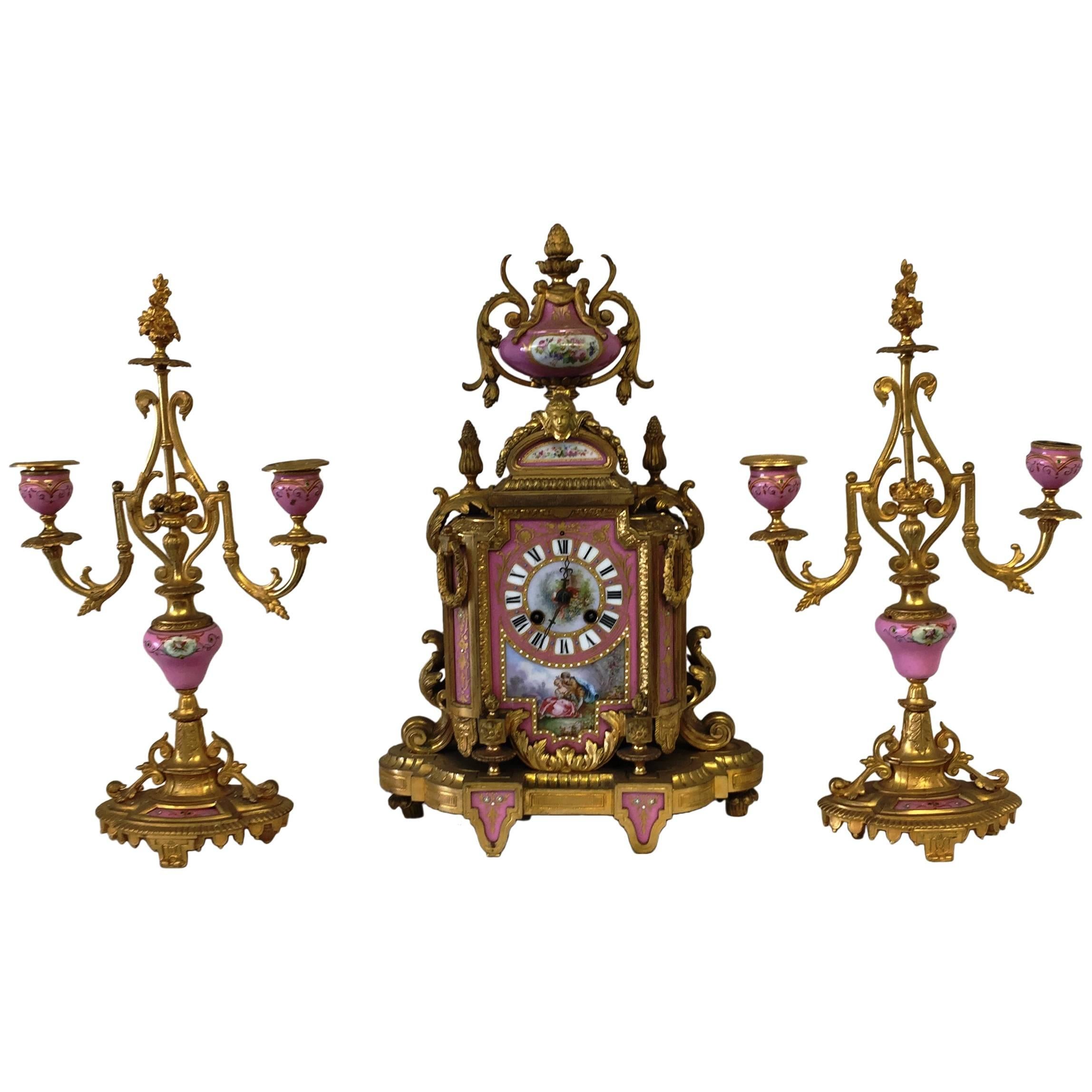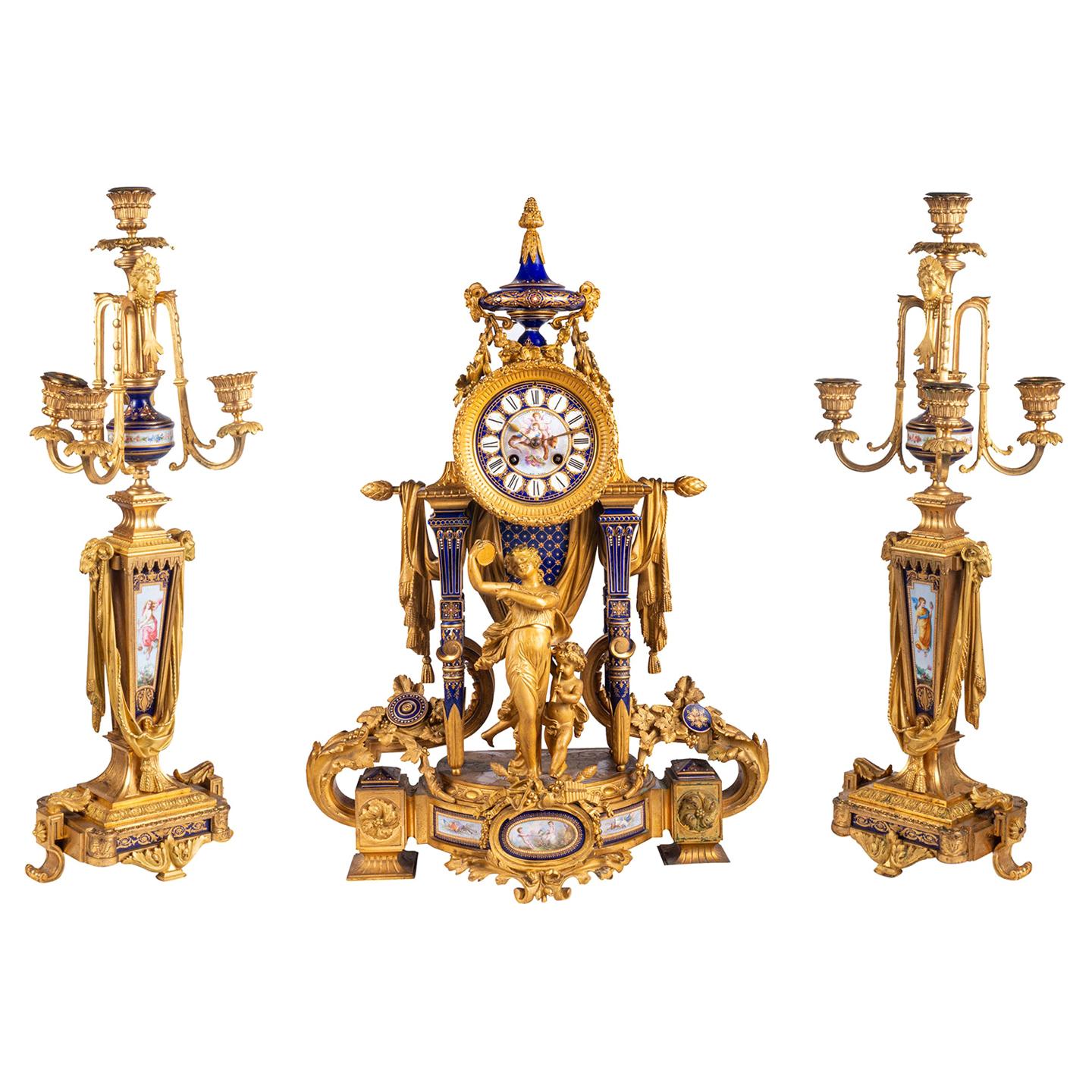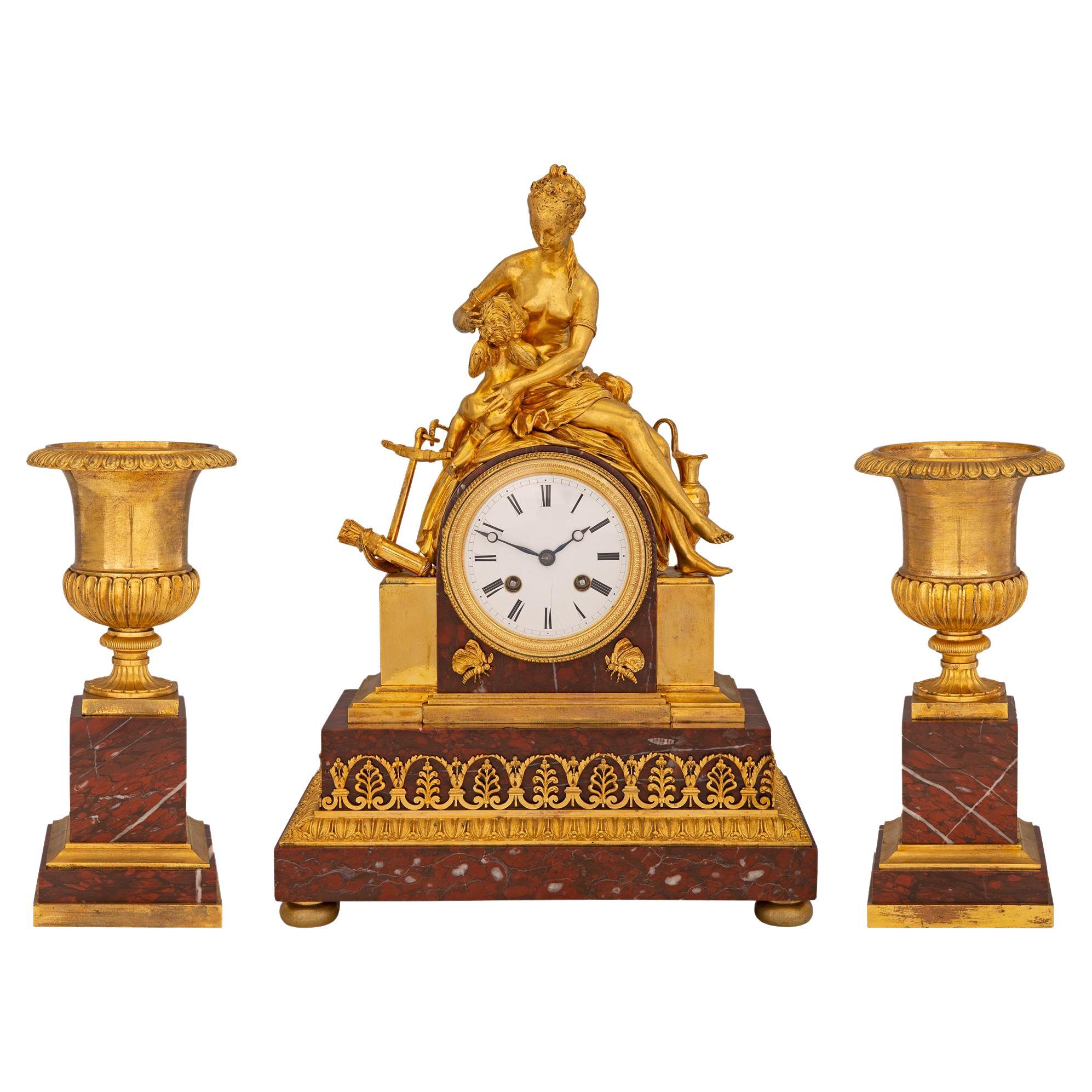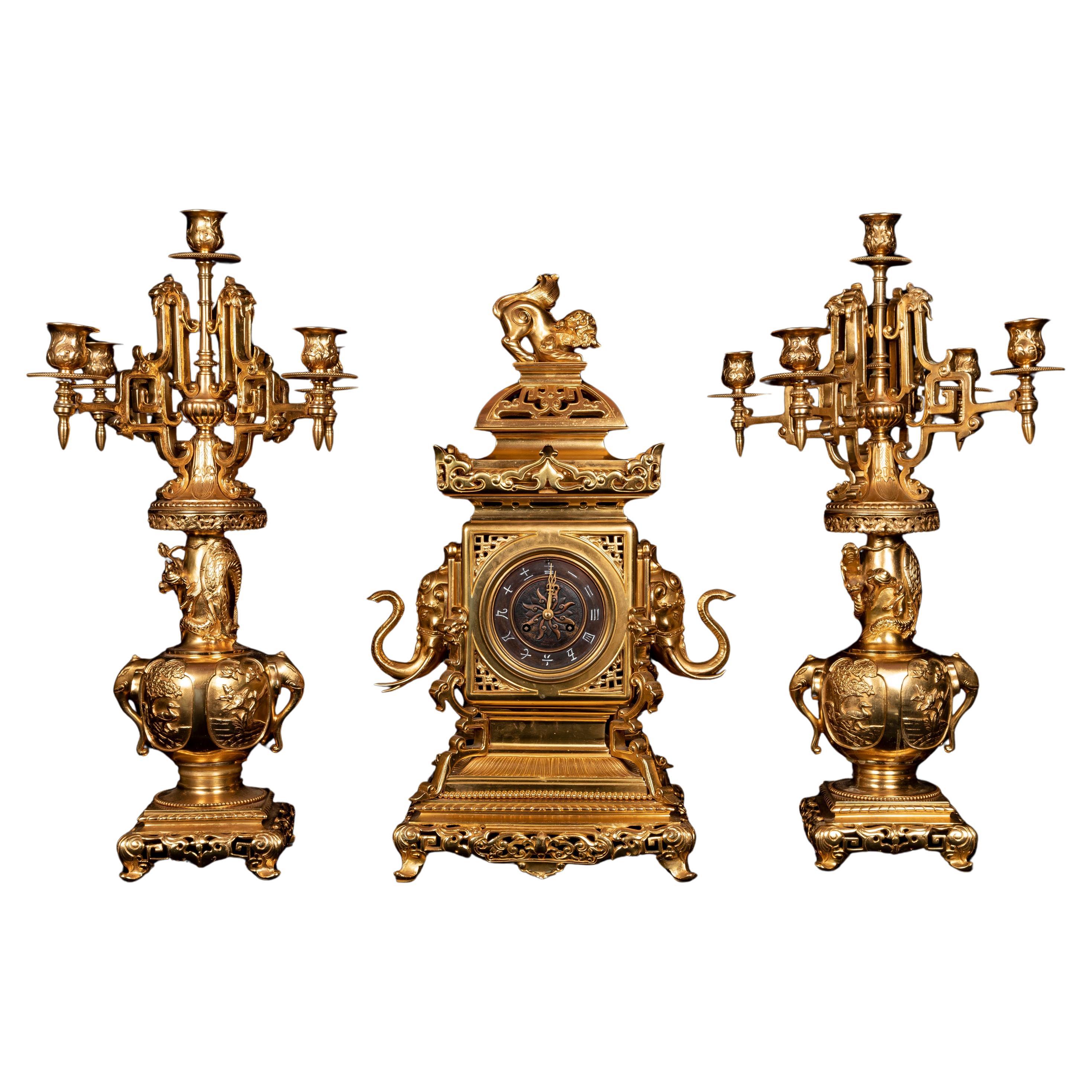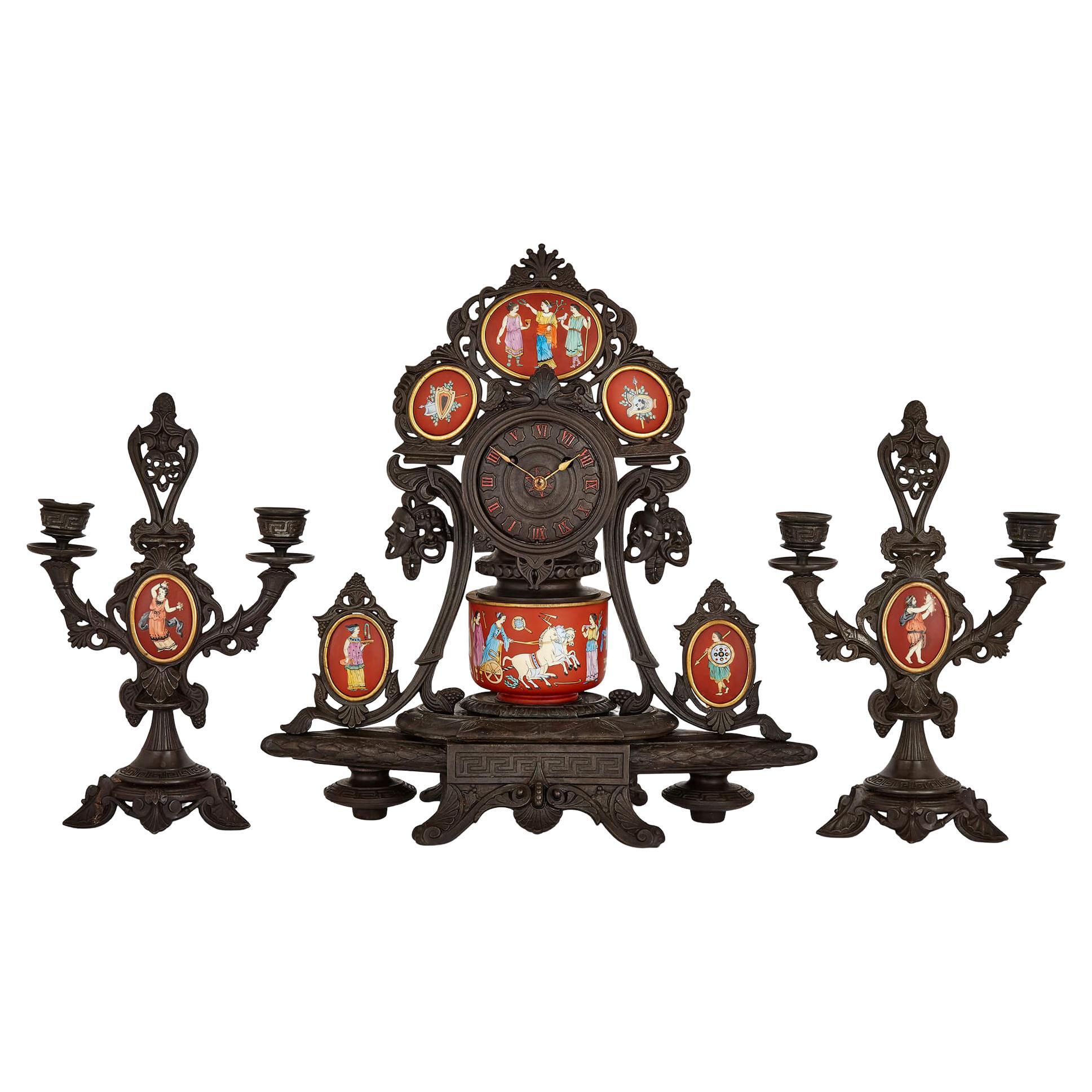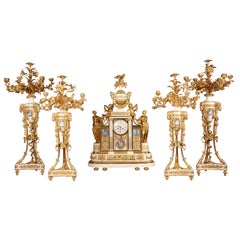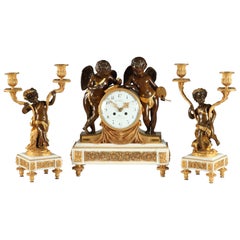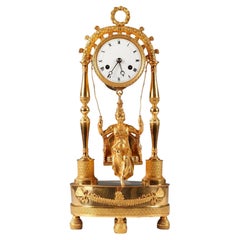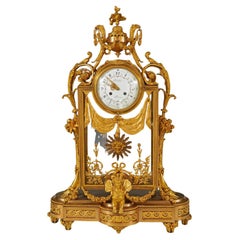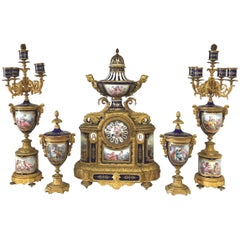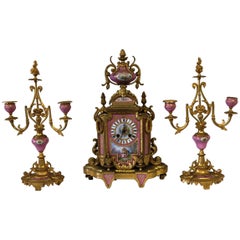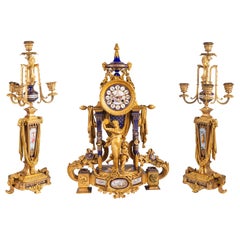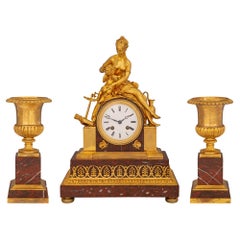Items Similar to Fine Neo-Greek Clock Set by H. Houdebine, France, Circa 1867
Want more images or videos?
Request additional images or videos from the seller
1 of 10
Fine Neo-Greek Clock Set by H. Houdebine, France, Circa 1867
$10,454.33per set
$14,849.89per set29% Off
£7,842.66per set
£11,140.14per set29% Off
€8,800per set
€12,500per set29% Off
CA$14,474.77per set
CA$20,560.75per set29% Off
A$15,731.58per set
A$22,346per set29% Off
CHF 8,430.69per set
CHF 11,975.41per set29% Off
MX$191,009.39per set
MX$271,320.15per set29% Off
NOK 105,842.22per set
NOK 150,344.07per set29% Off
SEK 98,152.58per set
SEK 139,421.27per set29% Off
DKK 67,039.67per set
DKK 95,226.80per set29% Off
About the Item
Dial signed H. Houdebine, Fabricant de Bronzes, Rue de Turenne 64, Paris
and clockwork signed Japy Frères & Cie – Médaille d’Honneur
A very fine neo-Greek style clock set made up of a clock and a pair of candlesticks. The clock executed in two patina bronze is surmounted by a covered vase and is decorated with porcelain plaques depicting female faces and Art attributes. The Roman numerals on the dial are framed with laurel wreaths. Raised on console feet and a base, the whole reposing on four claw feet. The ensuite pair of two patina bronze candlesticks is finely chased with small flowers and water leaves.
Henri Houdebine founded his company in 1845. He gained a great reputation in the making of clocks and decorative bronze pieces. His works, appreciated for their high artistic quality, took inspiration from various styles, including the neo-Greek style, very fashionable with artists in the 1860s. His work was immediately successful with the public, and one can say from 1862, that 50% of his production was exported. Houdebine set up his workshops at number 64, rue de Turenne, in Paris during the period 1865-1880. He participated magnificently in several Universal Exhibitions, such those held in Paris in 1855, where he was awarded a 2nd class medal for his statuettes and display cups, in London in 1862, and again in Paris in 1878 and 1889, where he won a Gold medal for his all the works he exhibited. Houdebine participated finally in the Chicago Universal Exhibition of 1893, where he presented splendid cressets, clocks and some sculptures.
- Creator:Henri Houdebine (Maker)
- Dimensions:Height: 19.69 in (50 cm)Width: 11.03 in (28 cm)Depth: 6.7 in (17 cm)
- Sold As:Set of 3
- Style:Greek Revival (In the Style Of)
- Materials and Techniques:
- Place of Origin:
- Period:
- Date of Manufacture:Circa 1867
- Condition:Wear consistent with age and use.
- Seller Location:PARIS, FR
- Reference Number:Seller: 1110/01stDibs: LU3860311509053
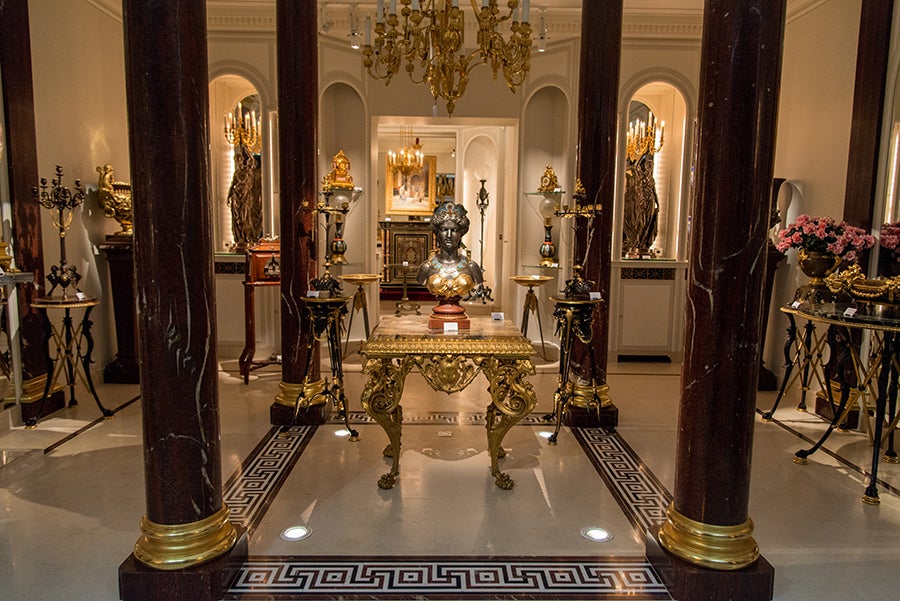
About the Seller
4.9
Gold Seller
Premium sellers maintaining a 4.3+ rating and 24-hour response times
Established in 1997
1stDibs seller since 2018
91 sales on 1stDibs
Typical response time: 2 hours
Associations
International Confederation of Art and Antique Dealers' Associations
- ShippingRetrieving quote...Shipping from: PARIS, France
- Return Policy
More From This Seller
View AllImportant Five Pieces Marble and Gilded Bronze Clock Set, France, Circa 1860
By Henri Picard
Located in PARIS, FR
Marked on the dial Furet & Bon, Hrs du Roy, à Paris
Measures: Clock – Height 98 cm (38 1/2 in.), width 70 cm (27 1/2 in.), depth 25 cm (9 3/4 in.)
Candelabra – Height 116 cm ...
Category
Antique 1860s French Louis XVI Mantel Clocks
Materials
Marble, Bronze
"Geniuses of the Arts" Gilded Bronze and Marble Clock Set by G. Fabre, c. 1900
By Samuel Marti, G. Fabre
Located in PARIS, FR
Dial signed G. Fabre, 4 rue des Filles du Calvaire, Paris
Clockwork signed Samuel Marti – Médaille d’Or 1900
A Louis XVI style gilt-bronze and statuary Carrare marble clock set, consisting of a clock and a pair candelabra...
Category
Antique Early 1900s French Louis XVI Mantel Clocks
Materials
Marble, Bronze
Ormolu Clock "with a Swing", France, circa 1820
Located in PARIS, FR
Very fine floral and decorated Restauration period ormolu clock, figuring two baluster columns joint together by a floral arch, and topped by a crown of roses. Roman numbers indicate...
Category
Antique 1820s French Restauration Mantel Clocks
Materials
Bronze
G. Denière, "Pendule à cage", France, circa 1860
By Henri Picard, Guillaume Denière
Located in PARIS, FR
Large and rare Louis XVI style cage clock in chiseled and gilded bronze, rectangular in shape, highlighted with friezes of water leaves and pearls, with glass panels decorated with t...
Category
Antique 1860s French Louis XVI Mantel Clocks
Materials
Bronze
$45,737 / item
Neo-Egyptian Bronze and Marble Clock Attributed to G.Servant, France, Circa 1870
By Georges Emile Henri Servant
Located in PARIS, FR
A black and red marble clock in the shape of an Egyptian temple attributed to G. Servant, flanked by double columns inscribed with hieroglyphs and ornated with a winged uraeus, all made in two patina bronze. The clock is surmounted by a patinated bronze sphinx. Resting on four bronze faces wearing the nemes and terminating in lion paw feet.
Georges Emile Henri Servant (circa 1828-1890) who took over his father in 1855 at their foundry, rue Vieille-du-Temple, in Paris, specialized in the production of neo-Egyptian style clocks, very popular in France since 1860s, and also the making of Greek style decorative objects. He drew considerable attention to the high quality of his bronzes at the 1855 Paris Universal Exhibition and then at the 1862 London Exhibition. At this time Servant exported up to 40% of his production, principally to the United States, where for instance, his sphinx clocks were sold with great success by Louis Tiffany Inc. or Hamann & Roche of New York (A similar clock is now exposed at the Metropolitan Museum of Art, New York). But his success came really at the 1867 Paris Universal Exhibition, where he was awarded a gold medal for his neo-Greek and Egyptian works (Les Merveilles...
Category
Antique 1870s French Egyptian Revival Mantel Clocks
Materials
Marble, Bronze
"The Source" Gilt bronze Clock attr. to L. Messagé & F.Linke, France, circa 1890
By François Linke
Located in PARIS, FR
Charming clock in the shape of a Rocaille-inspired cartel in chiseled and gilded bronze. Scalloped marine-inspired decor representing a trophy with oars, dolphins, reeds and flowers ...
Category
Antique 1890s French Rococo Revival Table Clocks and Desk Clocks
Materials
Bronze, Enamel
You May Also Like
19th Century Sevres Clock Set
By Manufacture Nationale de Sèvres
Located in Brighton, Sussex
A fine quality 19th century French Sevres porcelain and gilded ormolu clock garniture. Having a very impressive pair of five branch candelabra each...
Category
Antique 1890s French Mantel Clocks
Materials
Ormolu
$74,641 / set
19th Century French Sevres Porcelain Clock Set
By Manufacture Nationale de Sèvres
Located in Brighton, Sussex
A good quality French, 19th century pink sevres porcelain and gilded ormolu clock set. Having a classical urn to the top, an eight day chiming movement. A romantic scene painted to t...
Category
Antique 19th Century French Mantel Clocks
Materials
Ormolu
$6,785 / set
Rare 19th Century Sevres Style Clock Set
By Manufacture Nationale de Sèvres
Located in Brighton, Sussex
A very fine quality French late 19th century Sevres style and gilded ormolu clock garniture. Having a pair of four branch candelabra, each with ram's head and female mask mounts, dra...
Category
Antique 19th Century French Louis XVI Mantel Clocks
Materials
Ormolu
$38,070 / set
French 19th Century Neo-Classical St. Ormolu and Marble Garniture Set
Located in West Palm Beach, FL
A striking and most decorative French 19th century Neo-Classical st. ormolu and Rouge Griotte marble three piece garniture set signed Japy Frères. The impressive clock, which Japy Frères won a gold metal for this clock in 1855, at the center is raised by a rectangular Rouge Griotte marble base with fine bun feet and a striking wrap around Coeur de Rai and pierced palmettes bands at the mottled border. The white enameled clock face displays pierced hands and Roman hour numerals set within the mottled ormolu bezel with intricately detailed beaded and foliate designs with two charming and most unique butterflies. A beautiful maiden is seated above draped in a wonderfully executed flowing garment while breastfeeding a charming winged cherub with an anchor, a quiver, and an ewer at their side. The pair of urns are displayed at each side and are each raised by elegant square bases with a bottom ormolu band and an exceptional wrap around mottled band. Above the square Rouge Griotte pedestal...
Category
Antique 19th Century French Neoclassical Mantel Clocks
Materials
Marble, Ormolu
Large French Japonisme Ormolu Garniture Clock Set Attributed to Edouard Lievre
By Edouard Lievre
Located in New York, NY
A magnificent and finely cast palatial and very large French 19th century Japonisme three-piece ormolu garniture clock set attributed to Edouard Lievre. This striking and extremely u...
Category
Antique 19th Century French Japonisme Table Clocks and Desk Clocks
Materials
Bronze
Antique Neo-Grec Porcelain and Cast Iron Clock Set
Located in London, GB
Antique Neo-Grec porcelain and cast iron clock set
French, 19th Century
Clock: Height 41cm, width 40cm, depth 16cm
Candelabra: Height 30cm, width 2...
Category
Antique 19th Century French Neoclassical Mantel Clocks
Materials
Iron
More Ways To Browse
Antique Greek Revival
Hes Clock
Neos Clock
Clocks Circa 1860
Antique Clock And Candlesticks
Antique Greek Desk
French Clocks Greek
Vintage Art Deco Clocks
Brass Switzerland
Modern Desk Clocks
Bronze French Table Clock
Alarm Clocks
Antique Silver Clock
Vintage Swiss Clocks
1930s Art Deco Desk
Vintage Brass Desk Clock
French Art Deco Clock
Brass Table Clock 20th Century
